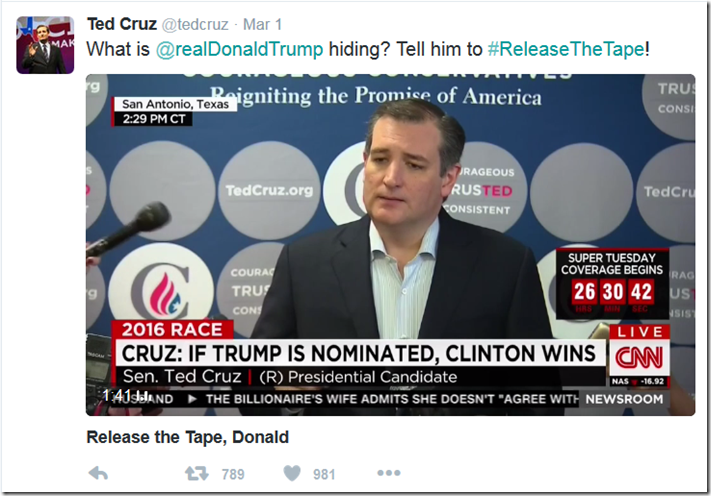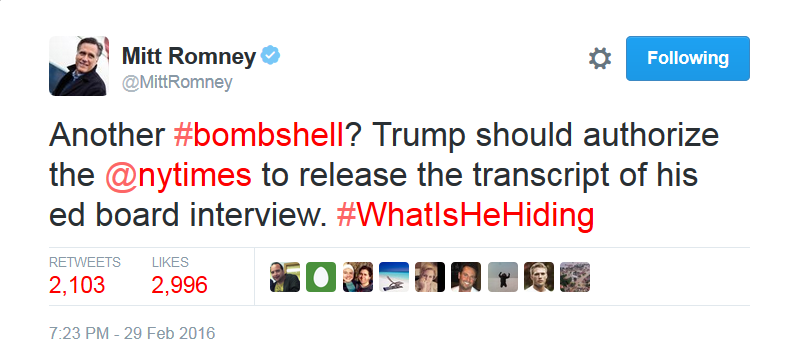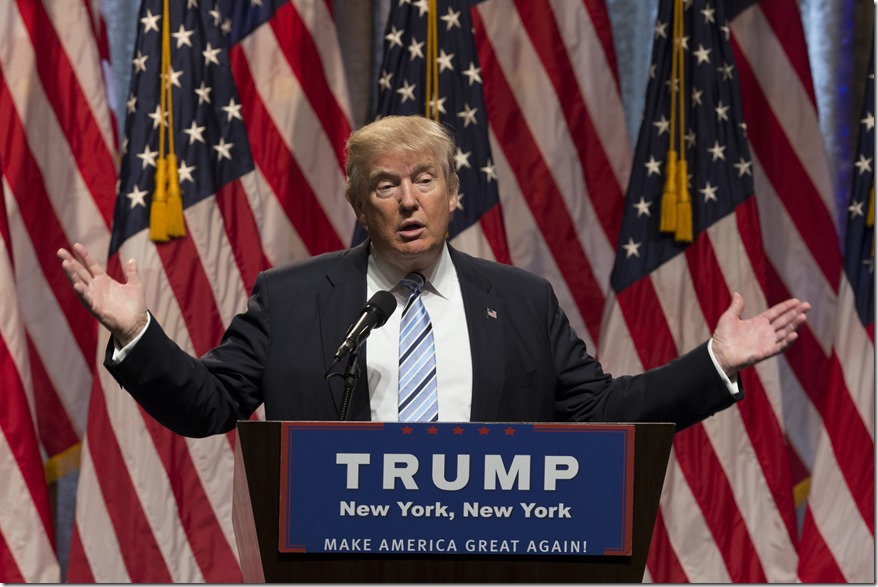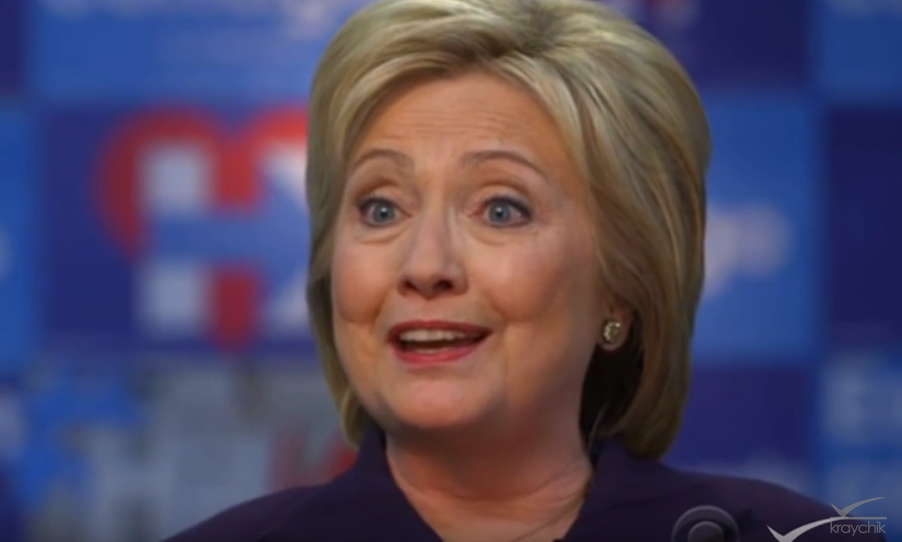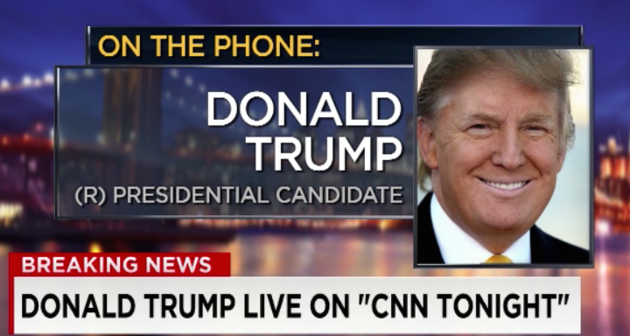Donald Trump’s "Off-The-Record" New York Times Interview
On January 5, 2016, Donald Trump visited the editorial board of The New York Times. Some 30 editors were reportedly present for the meeting, portions of which were agreed by both parties to be off the record.
Late last week, a columnist for the Times who attended that meeting wrote a piece suggesting that Trump was more flexible on his immigration views than he was letting on publicly:
So you obviously can’t explain how you’re going to deport 11 million undocumented immigrants, because it’s going to be the first bid in some future monster negotiation session.
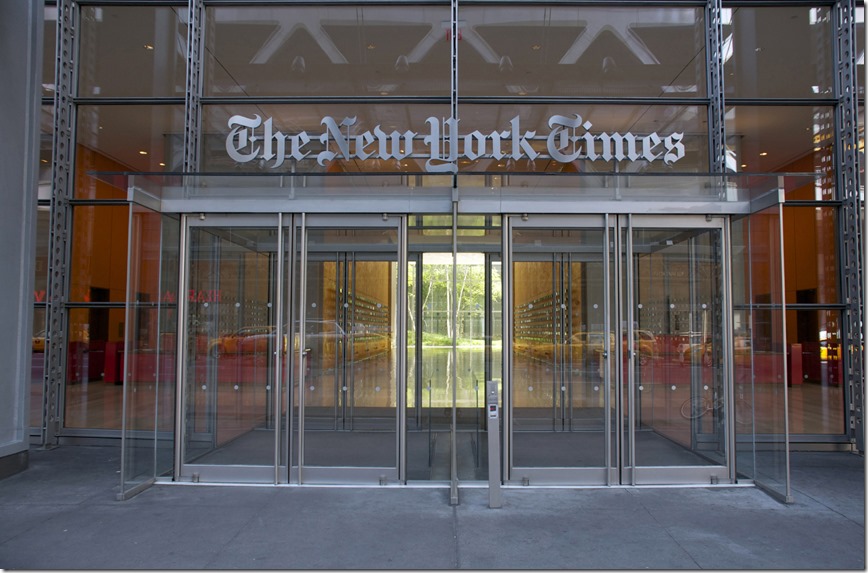
A column by BuzzFeed’s Ben Smith the next day fueled the story:
Sources familiar with the recording and transcript — which have reached near-mythical status at the Times — tell me that…sentence is a bit more than speculation. It reflects, instead, something Trump said about the flexibility of his hardline anti-immigration stance.
So what exactly did Trump say about immigration, about deportations, about the wall? Did he abandon a core promise of his campaign in a private conversation with liberal power brokers in New York?
For its part, The New York Times is refusing to release the tape without Trump’s permission—which he has not granted—and his rivals are seizing on the opportunity to expose his alleged double dealing.
How did the story get out in the first place?
According to Margaret Sullivan, the public editor of The New York Times:
So that the news side could check that on-the-record information, Mr. Rosenthal [the editorial page editor] sent a digital copy of the recording to a newsroom editor whom he declined to name, with the reminder that there had been an agreement to treat portions of it as off the record.
It’s possible that person leaked the story, or that anyone else in the meeting did. Sullivan concluded that:
What got The Times in trouble was the mixing of purposes (opinion and news), the blending of on- and off-the-record material in a single candidate session and the sharing of the recording — including among those who evidently didn’t care much about an off-the-record agreement. All of that amounted to an accident waiting to happen.
But what caught my eye was something Dean Baquet, the paper’s executive editor, told her:
“I don’t know how it got out, but I’m certainly not going to do a leak investigation,” Mr. Baquet told me. He also said that he found the idea of an off-the-record agreement when there are “30 people in the room” to be difficult to enforce and probably impractical.
That raises several questions, not least of which is why the Times agreed to rules that won’t—or can’t—be enforced. Future leakers just received tacit permission to do so, since their actions are unlikely to lead to a leak investigation. That can only have a chilling effect on future off-the-record candidate interviews.
But the responsibility here also shifts, at least in part, to Trump, who should know better than to trust that a conversation with 30 people would remain secret. That may sound a little bit like blaming the victim—but part of media relations means understanding and reducing risk.
To the list of rules I’ve previously published about going off the record, I’ll add a new one: the more people involved in an off-the-record discussion, the less likely your privacy will remain intact.
Don’t miss a thing! Click here to instantly join our mailing list and receive free media training and public speaking tips.
